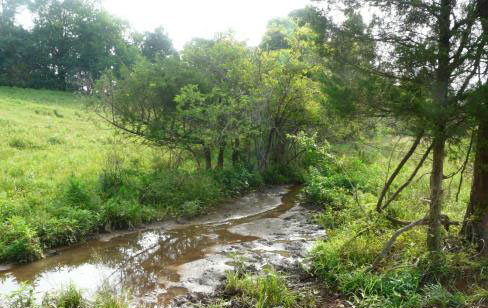Why buy credits in a mitigation bank to offset unavoidable impacts to stream or wetland resources? Once you’ve avoided impacts and reduced impacts, purchasing mitigation credits serves industry, builders, and others with these major benefits:
Saves time and money: The developer, after following the 404(B)(1) Guidelines to try to avoid or minimize wetland or stream impacts, then does not have to go through the time-consuming permit approval process to create or restore a wetland, riparian buffer or stream reach using permittee-responsible mitigation.
One of the benefits described in the Federal Guidance for the Establishment, Use and Operation of Mitigation Banks is that “Use of mitigation banks may reduce permit processing times and provide more cost-effective compensatory mitigation opportunities for projects that qualify.” In fact, US Army Corps (USACE) data consistently show that applicants with projects requiring mitigation can cut their permitting time in half by using mitigation bank credits to offset unavoidable impacts.
Over the long term, buying credits in a bank is generally less costly than permittee-responsible efforts, particularly when the cost of the additional permitting process is added to the construction and other tasks. Moreover, mitigation requirements including establishing protective easements and long-term monitoring/reporting can prove costly and time-consuming for those wishing to do the mitigation themselves.
Eliminates risk and responsibility – The credit transaction legally transfers all responsibility for wetland and stream mitigation to the mitigation banker.
This is especially important when a developer may not be experienced in wetland or stream restoration, or may not have the additional land required for mitigation, may not wish to encumber the mitigation property in perpetuity or other issues.
And purchasing credits in a mitigation bank brings one more highly significant benefit for the environment:
Assures the Mitigation Works – and lasts. Too often, wetlands built on-site or project improperly conceived off-site eventually fail because the landowner or developer does not have sufficient incentive or know how to maintain them. With mitigation bank credits, restoration is performed prior impacts, thereby reducing or eliminating temporal loss of ecological functions by the impact. Mitigation banks also provide financial assurances and conservation easements meant to reduce the risk of performance and to ensure long-term environmental protection of the bank properties and natural resources.
Provides Permanent Environmental Protection for the Mitigation- and guarantees perpetual maintenance of the bank’s environmental assets.
For these reasons, the USACE 2008 Mitigation Rule prescribes a priority for use of mitigation bank credits to offset unavoidable impacts across all its 38 Districts.
Information Courtesy the National Environmental Banking Association (NEBA)



